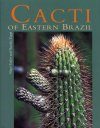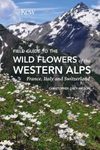Identification Key Monograph
By: Nigel Taylor(Author), Daniela C Zappi(Author), Wilhelm Barthlott(Preface By)
499 pages, 77 plates with 270 colour photos; 2 b/w photos, 51 colour distribution maps, tables
![Cacti of Eastern Brazil Cacti of Eastern Brazil]()
Click to have a closer look
About this book
Contents
Customer reviews
Related titles
About this book
Language: English with bilingual glossary in English and Portuguese
The Cacti of Eastern Brazil is a floristic monograph that has been 15 years in the making. The Cactus Family (Cactaceae) is an almost entirely New World group of unique plants. Within the Neotropics there are only a few key geographical centres of cactus diversity. The third of these in order of importance is that covered in this book as Eastern Brazil – that is all of Brazil’s North-eastern Region and much of the cactus-rich areas of South-eastern Brazil. In terms of cactus phytogeography Eastern Brazil appears to have been cut off from the habitats of other ‘terrestrial’ (as opposed to epiphytic) cacti by broad swathes of environments that the family avoids, namely the fire-swept cerrados (savannas) to the west and moist tropical forests to the north and south. This isolation probably explains the high percentage of endemic taxa, which include both genera and species, making the area a very discrete one for detailed study and of great importance for conservation.
The book covers the histories of both discovery and classification, phytogeography and palaeoclimates, conservation (some species being amongst the rarest in the family), identification and documentation. Identification aids in the form of dichotomous keys and coloured illustrations are provided for all named, accepted taxa, together with descriptions, ecological data, conservation assessments, full synonymy, bibliography, vernacular names, a glossary of specialised terms and documentation of geographical distribution and specimen data. The latter data have been used to create 51 full-colour distribution maps, which account for the known ranges of the 130 species and 32 heterotypic subspecies currently named and recognised. Introduced and naturalised cacti are also treated and illustrated.
This is the first comprehensive account of the family in the region to be published since the Flora Brasiliensis in 1890 and will be the standard work on Brazilian cacti for many years to come.
Contents
Preface by Prof. Dr Wilhelm Barthlott xi
1. Introduction 1
1.1 Significance of the area delimited as ‘Eastern Brazil’ 1
1.2 Background to the Cacti of Eastern Brazil project 2
1.3 Study methods and taxonomic concepts 3
2. History of Discovery, Naming and Classification 13
2.1 Problems of the ‘Hortus Siccus’ 13
2.2 Count Johan Maurits in North-eastern Brazil: 1637—1644 14
2.3 19th Century collectors 14
2.4 The golden age of cactus discovery: 1900-1950 15
2.5 Modern collectors: post 1950 19
2.6 Taxonomic history of the cacti from Eastern Brazil: 1890-1979 21
2.7 Cactaceae systematics 1980—2003 and the IOS consensus initiatives 25
3. Phytogeography 35
3.1 Overview 35
3.2 Definition ofvegetation types 42
3.3 Analysis of distribution patterns 45
3.4 Phytogeographical links and palaeoclimates 63
3.5 Reproductive and dispersal strategies 67
4. Conservation 139
4.1 Why conserve the cacti of Eastern Brazil? 139
4.2 Status of the environment and conservation of cacti in E Brazil 141
4.3 Criteria for the identification of priority taxa 148
4.4 Conservation ‘hot—spots’ 155
4.5 Priority actions recommended 156
5. Taxonomic Inventory 159
5.1 Introductory notes 159
5.2 Artificial key to genera 160
5.3 Pereskioideae:
Pereskia 164
5.4 Opuntioideae 173
Cylindropuntieae:
Quiabentia 174
Opuntieae
Tacinga 175
Brasiliopuntia 186
Nopalea 189
Opuntia 190
5.5 Cactoideae 193
Hylocereeae
Hylocereus 194
Selenicereus 198
Epiphyllum 198
Echinocereeae:
Pseudoaacanthocereus 200
Rhipsalideae
Lepismium 201
Rhipsalis 205
Hatiora 228
Schlumbegera 263
Cereeae
Brasilicereus 266
Cereus 269
Cipocereus 282
Stephanocereus 290
Arrojadoa 293
Pilosocereus 303
Micranthocereus 347
Coleocephalocereus 356
Melocactus 366
Trichocereeae
Harrisia 425
Leocereus 428
Facheiroa 429
Espostoopsis 434
Arthrocereus 436
Discocactus 441
Uebelmannia 451
6. Bibliography and Acknowledgements 457
6.1 Literature cited or consulted 457
6.2 Acknowledgements and photo credit codes 47
7. Glossary & Indexes 473
7.1 Glossary of specialized botanical terms (Cactaceae) 473
Glossário de termos botânicos (Cactaceae) 475
7.2 Index to botanical names and epithets 477
7.3 Index to vernacular names 489
7.4 Appendices I & II 492
Customer Reviews
Identification Key Monograph
By: Nigel Taylor(Author), Daniela C Zappi(Author), Wilhelm Barthlott(Preface By)
499 pages, 77 plates with 270 colour photos; 2 b/w photos, 51 colour distribution maps, tables
"This book [...] stands out as the most complete and authoritative record of the cacti of eastern Brazil, and should be in the reference libraries of all dedicated cactophiles."
– Roy Mottram, Cactus & Succulent Journal of America


































